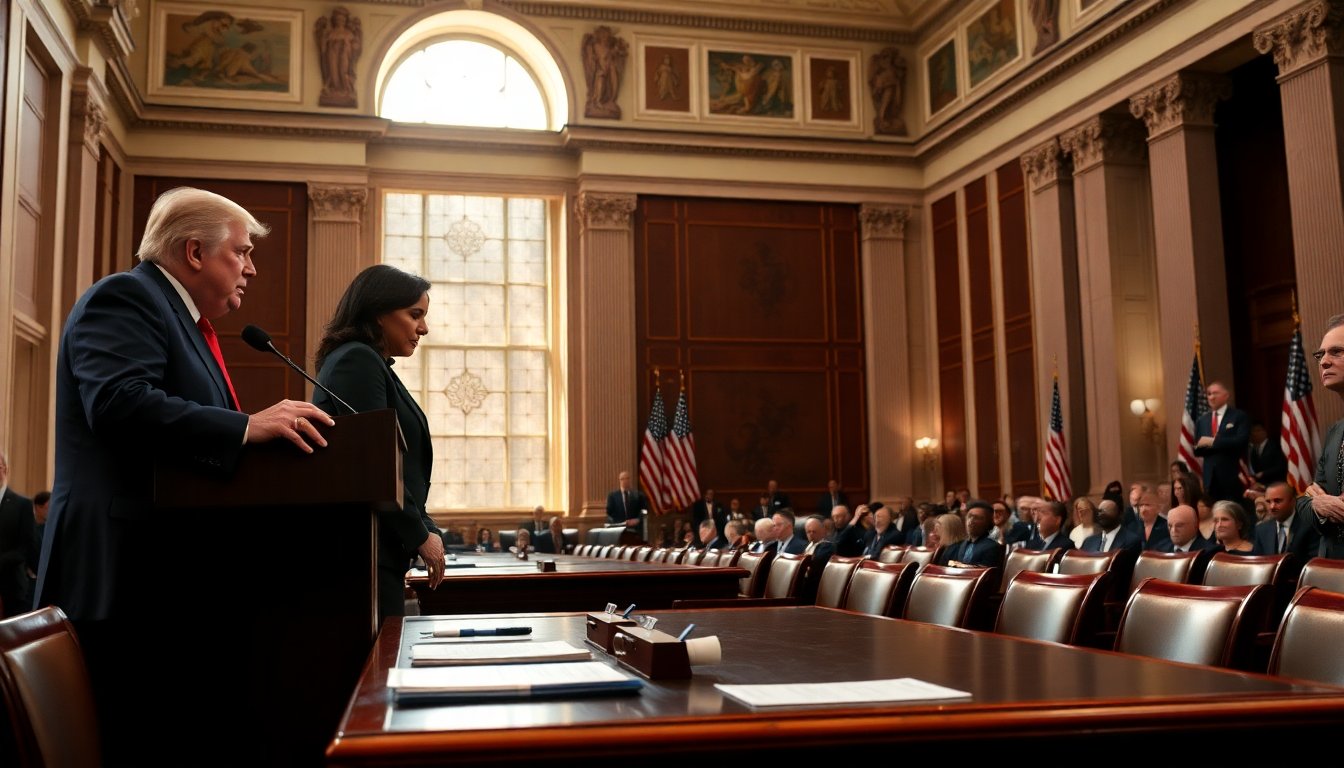Table of Contents
In a decisive yet uneventful session, Congress has officially recognized Donald J. Trump’s victory. This certification, occurring on April 30, 2025, unfolded with remarkable tranquility, particularly when compared to the chaotic events surrounding the previous presidential election.
The role of Vice President Kamala Harris was pivotal during this streamlined process. Her announcement, delivered with clarity and confidence, signified a new chapter in U.S. political history, showcasing a stark contrast to the dramatic and contentious atmosphere that defined the electoral proceedings of four years ago.
What led to the calm certification?
The recent session’s tranquility can be attributed to several factors. Firstly, the political landscape has shifted significantly since the last election. The nation has undergone a period of reflection and healing, allowing for a smoother transition of power. Lawmakers on both sides recognized the importance of stability and unity in a time when divisive politics could have easily reignited tensions.
Moreover, the election process itself was marked by enhanced transparency and security measures. Voter turnout was robust, and the results were deemed legitimate by independent observers. These elements contributed to a more peaceful atmosphere during the certification process, which many had hoped would be reflected in the overall political climate.
The role of leadership in ensuring a peaceful transition
Leadership plays a crucial role in shaping the narrative around electoral processes. Vice President Harris, along with other key political figures, emphasized the importance of respecting the democratic process. Their collective commitment to a peaceful transition has set an example for future electoral cycles.
During her announcement, Harris highlighted the significance of unity and collaboration among lawmakers. She urged representatives to focus on common goals rather than partisan divides, reinforcing the notion that democracy thrives on cooperation. This message resonated with many, fostering an atmosphere conducive to the swift certification.
Public reaction to the certification
The public’s response to this calm certification has been largely positive. Citizens expressed relief that the process was devoid of the drama that characterized previous elections. Social media platforms buzzed with commentary, echoing sentiments of hope for a more cooperative political environment.
Many Americans took to online forums to discuss the implications of this peaceful transition. While some expressed skepticism about the future, others remained optimistic, believing that this could signal a new era of bipartisan cooperation. The general consensus appears to be a desire for stability and progress, moving beyond the polarization that has plagued recent years.
Looking ahead: implications for future elections
As Congress moves forward with the certification of Trump’s victory, questions arise regarding the implications for upcoming elections. The smooth process could serve as a model for future transitions, encouraging a culture of respect for electoral outcomes, regardless of political affiliation.
Political analysts suggest that if this trend continues, it might foster greater public confidence in the electoral system. The potential for increasing voter turnout and engagement could change the landscape of American politics, promoting a more informed and active citizenry.
In conclusion, the certification of Donald Trump’s election victory by Congress on April 30, 2025, was a significant moment in U.S. history. The absence of drama, coupled with the emphasis on unity and respect for the democratic process, sets a hopeful precedent for future elections. As the nation looks ahead, the lessons learned from this certification may pave the way for a more harmonious political environment.


